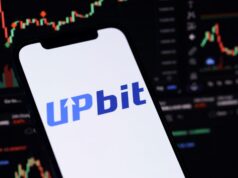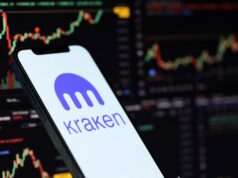Kraken has completed a $500 million funding round at a $15 billion valuation, moving closer to its long-anticipated potential 2026 public listing. The raise marks one of the largest capital injections into a crypto exchange this year and positions the company to scale operations as it prepares for a public debut. Reports also indicate that Kraken is in advanced discussions with a strategic investor to add another $200–$300 million, potentially lifting its valuation to $20 billion.
From Planned Raise to Execution
Back in July, the $500 million round was still framed as a plan. Now, that plan has been executed, confirming market appetite for regulated exchange equity. The closed deal establishes a clear baseline: it values the exchange at $15 billion. At the same time, Bloomberg revealed that the Kraken management is exploring further pre-IPO funding for the crypto exchange, which could reprice the company closer to $20 billion ahead of a 2026 public listing.
Confirmed Facts vs. Ongoing Talks
The Kraken funding round is a completed transaction: $500 million in new capital, backed by major institutional investors. The second leg of the story, discussions with a Kraken strategic investor at a higher valuation, remains ongoing. Distinguishing between these two events is essential. The former is a matter of record; the latter is still subject to negotiation and market conditions.
Why the Valuation Step Matters
Locking in $15 billion now shows stability, while potential $20 billion talks highlight momentum. This dual-track valuation strategy strengthens Kraken’s bargaining power with future IPO underwriters. It also helps the company calibrate share pricing when it eventually enters the market. For investors, the step-up suggests rising confidence in exchange business models. It comes at a time when the broader crypto IPO market outlook is only beginning to recover from a two-year slump.
>>> Read more: Circle Stock Surge Hits $25B Reigniting Crypto Confidence
Operational and Strategic Backdrop
Kraken’s leadership has been reshaping the company to be IPO-ready. Co-CEO Arjun Sethi has focused on efficiency and stronger compliance. The firm is also expanding into derivatives and international markets. Past acquisitions, such as NinjaTrader, deepen its product offering and support its pitch as a diversified revenue generator. These moves strengthen Kraken’s IPO plans and explain why investors are betting on a higher valuation.
Market Context and Investor Sentiment
Institutional capital is slowly re-engaging with exchanges after the reputational fallout of 2022. Coinbase’s steady performance as a public company has shown that demand exists when governance is strong and revenues are diversified. In this light, Kraken’s $500 million raise sends a strong signal. Despite volatility, investors still see value in owning a piece of the infrastructure that powers the digital asset economy.
Risks and Watchpoints
Despite the optimism, risks remain. The IPO window in 2026 will depend on macro conditions, interest rates, and investor risk appetite. Regulatory pressures, particularly in the United States, continue to loom over crypto exchanges. Like its peers, Kraken relies heavily on trading volume for revenue, making its valuation sensitive to swings in digital asset prices.
>>> Read more: Gemini Public Offering: GEMI Debuts on Nasdaq, Raises $425M
What Comes Next
All eyes will now be on whether Kraken finalizes its follow-on investment at a $20B valuation. If confirmed, that would reshape expectations for a Kraken IPO in 2026 and potentially set a new benchmark for crypto equity offerings. Investors will also be watching for early signs of an S-1 filing and the lineup of underwriters that will shepherd the exchange into public markets. For now, Kraken has achieved a milestone: securing fresh capital, reinforcing its balance sheet, and keeping its plans for a public listing firmly on track.
Readers’ frequently asked questions
How does a pre-IPO funding round affect retail investors who may want to buy shares later?
Pre-IPO funding rounds are typically limited to institutional and accredited investors. While these early participants may secure a better entry price, retail investors usually only gain access once the IPO launches on a public exchange. The valuation set in pre-IPO rounds, however, often influences the IPO price range.
What steps must Kraken complete before officially filing for a potential 2026 IPO?
Kraken will need to prepare audited financial statements, finalize its choice of underwriters, and submit an S-1 registration statement to the U.S. Securities and Exchange Commission. The SEC will then review the filing before the shares can be offered publicly.
How does Kraken’s planned IPO compare with Coinbase’s public listing?
Coinbase went public in April 2021 via direct listing, whereas Kraken is preparing a traditional IPO with underwriters. This means Kraken’s process will likely involve a roadshow to court institutional investors, potentially making its debut less volatile than Coinbase’s initial trading day.
What Is In It For You? Action items you might want to consider.
Track the valuation signals
Monitor whether Kraken secures the additional $200–$300 million at a $20B valuation, as this will influence IPO pricing expectations.
Watch for the S-1 filing
The official SEC filing will provide insight into Kraken’s revenue streams, compliance posture, and risks — all essential for evaluating IPO participation.
Compare IPO models
Study how Kraken’s traditional IPO structure differs from Coinbase’s direct listing, as this will shape market behavior and potential volatility on debut.











[…] filing came immediately after completing an $800M funding round, one of the largest private raises in the industry this year. The dual-tranche structure brought in […]